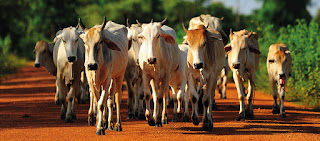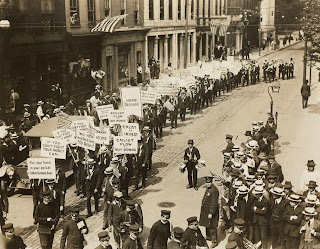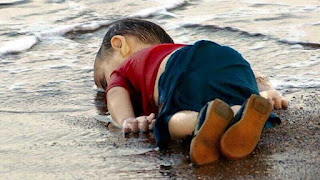In the beginning of the twentieth century, USA had an epidemic among cows. A bacterial infection called brucellosis was spreading through the cattle, causing spontaneous miscarriages, known as “contagious abortion”. By the 1910s, the miscarriages threatened livestock across the USA.
Worried about the disease, farmers would kill the
diseased animals, to try to eradicate bacteria from their herds. George Potter,
a vet from Kansas had an epiphany: a cow getting brucellosis may lose its calf,
but at the same time acquire immunity to the disease. An immune cow was more
valuable than an uninfected one.
In a 1918 article in the Lancet, Potter compared the miscarriage disease to a fire,
which unless new fuel is constantly added, dies down. “Herd immunity is
developed, thereby retaining the immune cows, raising the calves and avoiding
the introduction of foreign cattle. This was the first known use of the term “Herd Immunity”.
*****
In the 1920s this concept made some scientists
curious. They began deliberately infecting mice to see how the disease spread
through their colonies. They discovered that above a certain threshold, the
infection couldn’t find new hosts, and stopped spreading.
In 1923, a British pathologist Sheldon Dudley studied
a diphtheria outbreak at a crowded navy school. One thousand children of naval
officers ate together in a dining hall, and slept in cramped military-style barracks.
Dudley found that every time new students joined the school, the diphtheria bacteria
would attack the newcomers, and an outbreak would start again. In 1924, Dudley
applied, possibly for the first time, the term “herd immunity” to humans.
Now in covid times, a semi-literate person uses the expression.
Equating us to cattle may sound offensive. But the term’s origin was in the herd
of miscarrying cows.
*****
While Dudley was studying diphtheria, a diphtheria
vaccine was developed. He began wondering: What is the best way to reach herd
immunity: natural exposure or vaccination?
Last year, several heads of states thought of reaching
herd immunity through natural exposure. To be fair, there were no vaccines
then. Johnson started with it in the UK. Trump’s advisor Scott Atlas, who
called himself anti-Dr Fauci, recommended it. (Trump was so unengaged; he often
called it herd mentality). Sweden took it as an official state policy. And
Russia adopted it without an official pronouncement.
All these nations were heavily punished. The UK and
USA had to rethink. Sweden acknowledged the unnecessary loss of thousands.
Russia has unofficially lost more than half a million to covid.
It is possible to opt for mass natural exposure if the
virus is not deadly. Without vaccinations,
Indians develop herd immunity against the flu every season. Because flu is not
so deadly. Covid virus kills and maims. Such a plan inevitably leads to
catastrophic loss of lives and suffering. We usually look at the death count. But
many infected people suffer long covid,
with damaged organs. They may take years to recover, or not recover at all.
Herd immunity against covid through natural exposure
is rejected by scientists as unrealistic and unethical. Vaccination is the only
ethical road.
*****
The formula for calculating the required herd immunity
percentage is 1- (1/R0), which in simple language means the more transmissible
the virus, the higher is the %. For example, measles, an extremely infectious
disease, has an R0 between 12 and 18, which translates into a herd immunity
threshold of 92-94% of the population.
Looking at this number on a national basis is a
mistake. In large countries like the USA or India, some places may be
vaccinated enough to reach immunity, but less vaccinated pockets may still be
vulnerable.
*****
Finally, when the USA or UK currently say their R0
(spreading rate) is low, it is low because of the lockdowns, masks,
handwashing, and distancing. When human behavior changes; people start throwing
masks away, and hugging; the R0 can go up, and with it the herd immunity %
required shoots up. Coming months will show whether the joy of these nations
was premature.
This is why fully vaccinating an entire nation and the
entire world may be the only effective way to achieve herd immunity.
Ravi









